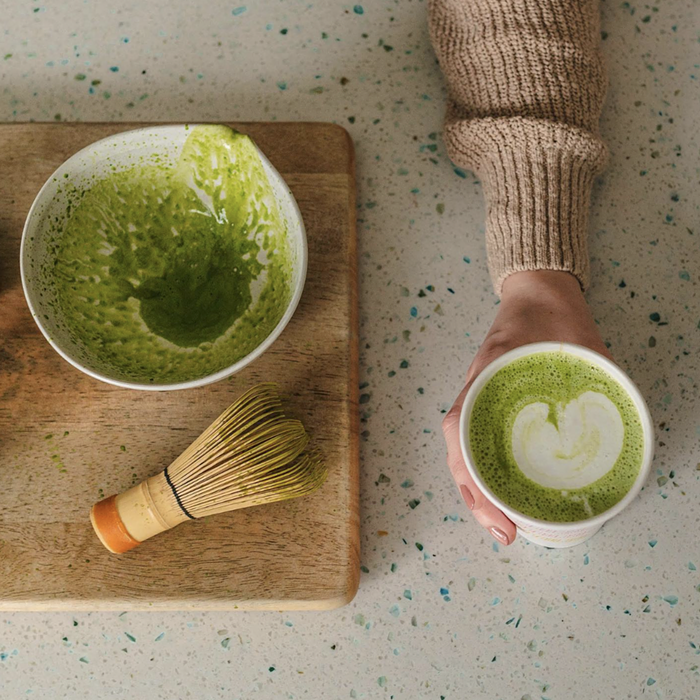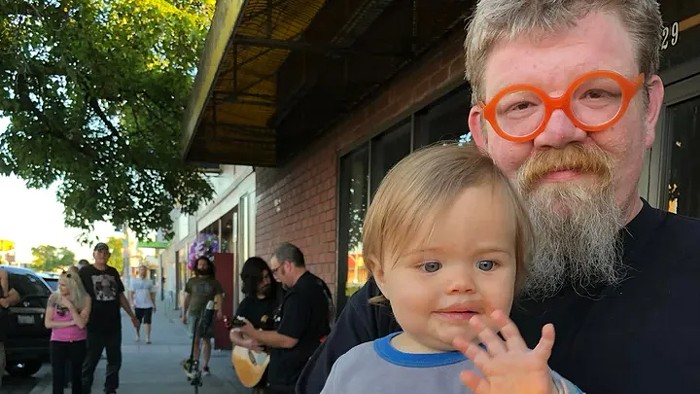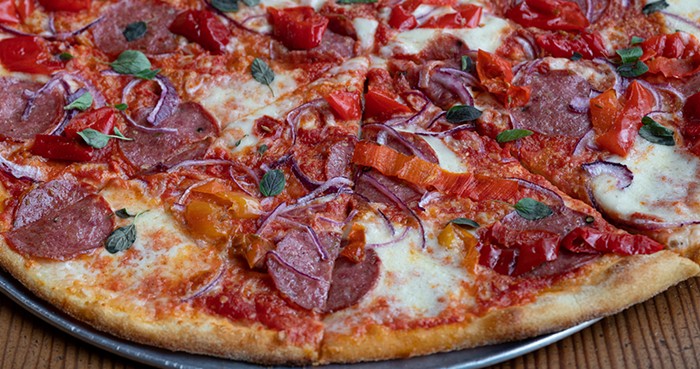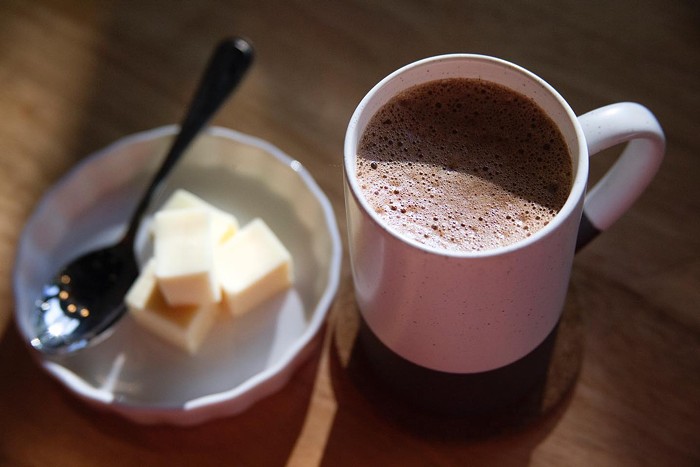"It's all about how it looks on the plate," one young woman said, as she paused to look into a classroom where student chefs were making club sandwiches (perfectly assembled, cut with military precision, and arranged around a bright bed of greens) and elegantly overflowing pita pockets. Two students clad in kitchen whites passed by, and one was saying "... carrots, and curry"; another student stopped into the office to announce to another teacher that his class had made "perfect naan."
"If it's not made on a tandoor, it's not perfect," the teacher said, with the kind aloofness of someone who has seen something done perfectly.
This is what I love about cooking schools, the way that food becomes the center of things--a vehicle for focus, intellectual pursuit, and creativity. And cooking school is where this indulgence is given free rein, not just in the warm and fuzzy metaphorical vein of food as caring or community, but as a business that should be examined from every angle. The Art Institute's cooking students study what you would expect (and hope) them to--sanitation, knife skills, foods from different cultures--but they also learn things that have to do with running a business smartly and efficiently: computer skills, public speaking, world cultures.
Despite the rise in the popularity of cooking--and a concomitant interest in the people who do it--there can be a strong industry resistance to the idea of professional cooking programs, and there are those who see them as not unlike unnecessary finishing schools. The only analogue I have for this is being a writer with a Master of Fine Arts in writing, and encountering something like scorn from people who have made careers in writing without the expensive degree. You'll also find blithe dismissals of whole art shows as "MFA art" or "art-school art," but the prejudice (which is sometimes, I have to say, well-earned) against schooling in art stems from some feeling that art can't be taught.
The ambivalence about cooking programs has a lot to do with a class shift in the job market. Anthony Bourdain, in his best-selling Kitchen Confidential, writes about the claiming of blue-collar jobs (formerly held by immigrants, convicts, and laborers with little or no college education) by young men and women holding expensive degrees and a firm sense of entitlement (in the AIS culinary program, diploma programs run to $11,520, and an associate's degree runs to $31,680, exclusive of lab fees and supplies).
I wanted to ask Chef Fisher about this, but we didn't manage to meet that day. It turned out I was trying to conduct my little cultural investigation while the culinary program was finishing up the quarter, and everyone was busy and harassed; Chef Fisher was bogged down in the dean's office. At his invitation, I came back for a graduation celebration, where the students show off their skills for family and friends and anyone lucky enough to score an invitation.
While I waited in the hallway for the dining room doors to open (and ate a delicious sushi roll with chili-spiced tuna that someone handed me), I chatted with some current and former students, and found them anything but scornful and entitled. Two former students who came back "to network" have good jobs, and are thrilled to have them. When I asked a group of first-year students what kinds of jobs they'd like, not a single one said "my own television show," but gave more thoughtful answers. One wanted to work in a winery, because of the opportunity for creating small, specific menus; another wanted to return to Alaska and open a lodge; another wanted to work first in a country club and then in a hotel, so he could see both sides of this very specific service industry.
They were all modest and polite, and quite candid. When I asked them if they expected to run into the kind of resistance that Bourdain describes, they were realistic and not in the least defensive. "There are places that think, 'Well, you've learned everything already and you're not going to want to listen, to learn how we do it here,'" one student said. "It does happen." But the consensus seemed to be that in this cooking-savvy world, there's only so far you can go without a degree, in terms of both ambition and salary.
The kitchens around the dining room are big, gleaming, stainless-steel confections--some with views of Puget Sound and the mountains, all of them much more spacious and better-equipped than anything these students will encounter in the working world. (Doubt me? Peek into Campagne's kitchen window on any given night and watch six or so people crawl all over each other in a tiny little box.) In one kitchen-classroom, you could watch the competition team practicing their knife cuts, reducing a tomato to concassé (peeled, seeded, chopped) in a matter of minutes. Occasionally, a tall gentleman with glasses and closely cropped white hair would come in and look at their work, poking through the cuts, checking for precision and uniformity. This, I learned, was Chef Fisher.
Somehow, I never managed to meet him, I think because by the time he was available, I was too busy eating everything in sight.
The menu of Northwest foods devised by the students both acknowledged and creatively dismissed local food clichés by making little mini-menus for different Seattle neighborhoods. There were those spicy tuna rolls--plus spring rolls, summer rolls, and pork dumplings--to represent the International District. A trio of herring dishes (in mustard sauce, tomato sauce, and sour cream) from Ballard. The tiniest little pattypan squash you've ever seen, filled with goat cheese from the Market. And five different salmon dishes from the waterfront, so far from the same old thing that I broke my salmon moratorium to taste the croquettes--deep-fried but ever so light, with red pepper coulis--and a salmon ceviche that was so good I moaned. Which was very embarrassing, but the only one who noticed was a student standing nearby. He smiled happily and said, "Thank you, thank you very much."
The Art Institute of Seattle 2323 Elliott Ave, 448-0900.
The Portfolio Room
2323 Elliott Ave, 239-2363. The on-campus restaurant run by AIS culinary students resumes regular service on Wed Oct 30.


















